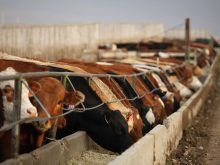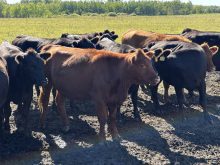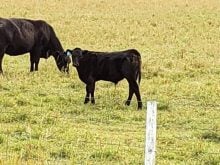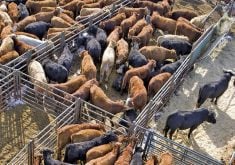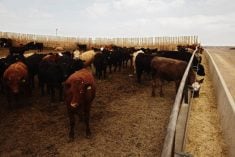This year’s drought taught me many lessons about the dangers of high nitrates in beef cow forage. That is why I recommend that all cow-calf producers test all their harvested forages for nitrates, whatever field it came from. It’s going to be money well spent, whether tests are negative or positive. And if they are positive, it is likely that something can be done so this high-nitrate forage can be fed safely.
One of my first nitrate lessons is that it is essential to plant life. It all starts with the plant roots’ uptake of nitrogen as nitrates from the soil, and then it is transported to the leaves and converted into plant protein. Dangerous accumulation of nitrates often occurs when this process is suspended due to a lack of moisture, which slows down the transportation of nitrates, literally stopping further protein production.
Read Also

Claas brings 1000 Series SP forage harvesters to Canada
In mid-August, Claas unveiled its new line of Jaguar forage harvesters at an event in Visalia, California, deep in the heart of that state’s dairy region.
We see this happen in drought-stricken cornfields in which nitrates accumulate in the bottom third of the plant’s stem. By a different means, a lack of moisture causes alfalfa to accumulate nitrates in its leaves rather than its stems, as do corn and cereal crops. That’s because alfalfa growth adds plant material at each new leaf junction at the top of the plant. In either case, nitrate accumulation is usually higher in young plants or in regrowth versus more mature stands.
Another lesson is that not all drought situations cause immediate accumulation of nitrates in forages. This means if the soil is excessively dry, very little nitrate is absorbed by the equally dried-out plants. It might take a few days or so after an appreciable rainfall that drought-stricken forage may take up high levels of surrounding soil nitrates.
It happened to a friend that raises about 300 Red Angus/Charolais-cross beef cows in southern Manitoba. We tested individual forage samples for nitrates from a half-dozen drought-burnt fields, namely oat straw, barley straw, oat greenfeed, mixed barley-greenfeed straw, alfalfa and grass hay. We also ran a seventh sample from a field of grass hay regrowth (seen in the accompanying photo) that recently had three inches of rain.
The laboratory results revealed that the former six samples had nitrate accumulations from 0.02-0.10 per cent NO3. Such nitrate levels are considered as safe to feed cattle, since research says mature cows and young stock can safely consume a total diet containing no more than 0.5 per cent nitrate (NO3) on a dry matter basis. We also got our nitrate result of our last sample of regrowth, which recorded 0.39 per cent (dm basis).
Although this last result tells us that it was OK to graze my friend’s brood cows on it, I recommended that he should bale it as gestating cow hay. My reasoning was that we only took one two-pound sample from a 40-acre field. There could have been more dangerous nitrate hot spots.
This situation finally taught me that the presence of nitrates in this tested forage or those found on another farm can always pose a threat to the well-being of the entire cow herd.
When nitrate levels are high
There are three recommendations that I can offer to effectively reduce the threat of nitrate poisoning in beef cattle when forage laboratory analysis proves high levels of nitrates:
1. Don’t feed high-nitrate forage. This is the safest choice, yet it is not always practical when high-nitrate forage such as hay might be the cattle’s main feed supply.
2. Ensile high-nitrate forage. Ensiling barley and corn into silage reduces nitrate levels by as much as 60 per cent, yet high-nitrate silage may still contain toxic levels of nitrates.
3. Dilute high-nitrate forages. This recommendation is the most practical choice. For example, my friend cited above can dilute his new regrowth hay with low-nitrate oat and greenfeed straws.
While these points of advice may not seem like the solid solution in this year’s drought, they are still viable options when producers are faced with feeding high-nitrate forage to beef cows. As a result, they can address the safety issues without worry.




